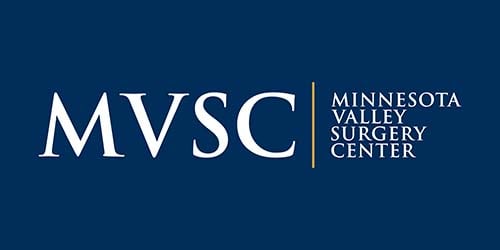The Question Surrounding Knee Replacement
A knee replacement sounds like a dangerous and intensive surgery. Long ago, this would be the case. Now, knee replacements are quite common, with millions of procedures happening every year. And with the invention of minimally invasive techniques, the conversation has shifted. People now want to know if the surgery is a same-day procedure. Outpatient joint surgery is growing in popularity and demand. But is everyone a candidate?

Why replace my knee?
The knee is a vital joint formed by the tibia, femur, and patella bones. Cartilage covers the bones and prevents shock absorption. Due to injury or conditions like osteoarthritis and rheumatoid arthritis, both bone and cartilage can degrade. This damage causes unbearable pain, instability, and discomfort. In cases that don’t respond to treatment, knee replacement is the next step.
A new knee, a new you
Knee replacement is often known as total knee replacement or knee arthroplasty. The goal is to replace degraded or damaged bone and cartilage. The surgeon will use prosthetics made of metal or other durable materials. Under general anesthesia and using small incisions, the surgeon inserts tools to remove damaged cartilage and bone. The next step is to replace the cap of the tibia, femur, and patella. Once the new parts are in place, the surgeon removes the tools and stitches up the wound. Any excess fluid is drained off, and the doctor bandages the knee.
A few days in the hospital
In the past, patients stayed an excess of 10 days in post-operative care. Now, patients stay for just a few hours or days after the operation. During the time, the doctor occasionally observes the knee while checking for possible infections. Around this time, a physical therapist may visit the patient to create a therapy plan. Inpatient surgery is useful for observation, treating any complications, and dealing with the patient’s mobility.
Moving to outpatient procedures
More and more patients are opting for outpatient care. Due to minimally invasive techniques, persons can leave the same day. However, for hospitals to complete outpatient surgeries, several conditions need to be in place. These include timing, the success of surgery, and the family’s social support. The patient should also be of sound medical health, with a strong support network to make at-home recovery easier.
Want higher chances of same-day discharge?
An ambulatory surgery center is one way almost to guarantee a same-day discharge. These outstanding institutions focus on performing same-day, outpatient surgeries. Most ASCs are equipped with state-of-the-art equipment and highly skilled surgeons. A patient in generally good health can schedule a same-day total knee replacement. Surgicenters also have higher success rates and lower infection rates. Once approved by a doctor, schedule a same day or 24-hour outpatient surgery with an ambulatory surgical center.
Don’t forget recovery
Whether inpatient, outpatient, or at an ASC, recovery is the most important part of knee replacement. At home, the patient must practice pain management while keeping the surgical area clean. Physical therapy is vital to ensure the long-term durability of the knee. If possible, the patient should set up living arrangements in advance to minimize climbing, bending, or reaching overhead. Overall, recovery should take 3-6 weeks. From there, rehabilitation will help the knee resume proper motion in a few months.
Same-day discharge is possible
With the improvement of total knee replacement over the decades, outpatient surgery is a continuing trend. Once the patient shows no sign of infection and is in good health, the hospital may approve a same-day discharge. However, this is not guaranteed. With an ambulatory center, however, same-day discharge is highly likely. Speak with a surgeon about the possibility of same-day discharge.
Can Lower Back Pain Return After Spinal Surgery? 3 Lifestyle Changes To Get The Most Out Of Fusion
Minnesota Valley Valley Center2024-04-02T14:49:38-05:00April 15th, 2024|
Spinal surgery is an excellent solution for lower back pain, but symptoms can return. With lifestyle changes, patients can get the most out of fusion.
A New Lease On Life: Exploring How Robotic Total Joint Replacement Can Get You Active Again
Minnesota Valley Valley Center2024-03-24T17:38:47-05:00March 29th, 2024|
Robotic total joint replacement uses a robotic arm to replace the joint. This innovative approach allows a quick return to activities.
Restoring Dexterity: How Outpatient Carpal Tunnel Surgery Can Change Your Life
Minnesota Valley Valley Center2024-03-24T17:38:37-05:00March 15th, 2024|
After months of wrist and hand pain, carpal tunnel surgery may be needed. With outpatient options, restored dexterity with less pain and discomfort is possible.
More Articles from MVSC
March 29, 2024
Robotic total joint replacement uses a robotic arm to replace the joint. This innovative approach allows a quick return to activities.
October 13, 2023
Technology is transforming knee replacement surgery. Patients with arthritis should understand the advantages of robotic-assisted arthroplasty.
August 11, 2023
Most people see significant improvement after hip replacement surgery, but some lifestyle habits can slow down recovery and exacerbate pain.
July 6, 2023
UCL reconstruction restores ROM and elbow stability. Tommy John surgery is for unresolved complete tears or overhead activities.










